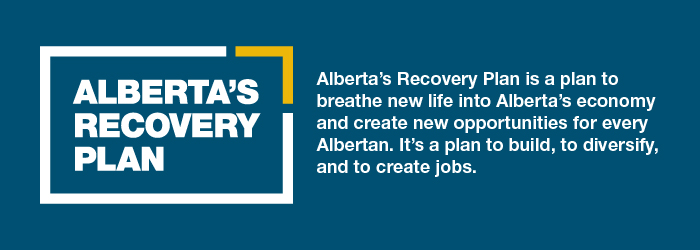As part of the 13th annual Canadian Federation of Independent Business Red Tape Awareness Week from Feb. 22 to 25, Alberta’s government is declaring Red Tape Reduction Week in the province.
Reducing unnecessary red tape saves time and money for Albertans and Alberta businesses. Since the Associate Ministry of Red Tape Reduction was created in Spring 2019, Alberta has eliminated more than 21 per cent of the province’s regulatory requirements and implemented changes that have saved Albertans, job creators and the government more than $1.2 billion.
“This week, I’m proud to acknowledge the incredible progress we’ve made to strengthen economic growth by modernizing regulations, eliminating unnecessary requirements and reducing administrative burden. But there is more work to do. I am excited about all the high-impact red tape reduction activities planned for this year that will make it easier for businesses to invest, operate, grow and drive Alberta’s Recovery Plan and economy forward.”
Reducing red tape is a key part of Alberta’s Recovery Plan to create jobs, diversify the economy, and strengthen the workforce with skilled workers in all sectors of the economy.
Key red tape reduction initiatives this past year include:
- Making it easier for skilled professionals to come to Alberta to help grow our economy and create jobs through changes to the Labour Mobility Act. This enables highly-skilled certified workers from across Canada to bring their expertise to Alberta and help grow our economy – no matter where in the country they received their credentials.
- Cutting red tape on co-mingled well abandonment. The Canadian Association of Petroleum Producers (CAPP) estimated that this adoption of a common sense, risk-based approach will create $584 million in savings for industry, while speeding up the reclamation process for gas wells.
- Establishing a competitive royalty rate for helium, helping to attract investment and create jobs. Several small producers have expressed an interest in exploring the helium potential in southeast Alberta, with some production already underway.
- Enabling business to permit their tax professional to file tax documents on their behalf with the Alberta Tax and Revenue Administration.
- Eliminating the duplicative Alberta Indian Tax Exemption Card to make it easier for indigenous Albertans to access tax exempt fuel, tobacco and accommodations on-reserve.
- Continuing to expand the range of registry services that can be accessed online including:
- Birth registrations
- Birth certificate ordering
- Extra-provincial registration for corporations and limited partnerships across western Canada
- Name Search Report ordering
- Annual registration renewals for various vehicle types
- In-transit permit orders
- Specialty licence plate orders
- Standard and commercial driver’s abstracts
- Vehicle information reports
- Duplicate vehicle registration certificates
- Streamlining the Canadian Agricultural Partnership grant application process making it easier for producers and food manufacturers to access funds more quickly. In 2020-21 the program led to more than $150 million in investment and 750 jobs.
- Promoting economic growth through tourism and community revitalization by enabling municipalities to create entertainment districts, designated public areas where adults may responsibly consume alcohol.
Shifting industry away from multiple independent and outdated information systems to one single consolidated Digital Regulatory Assurance System for environmental regulatory applications, approvals, and long-term monitoring. The implementation of this system for approvals under the Water Act has already substantially reduced application processing times.
